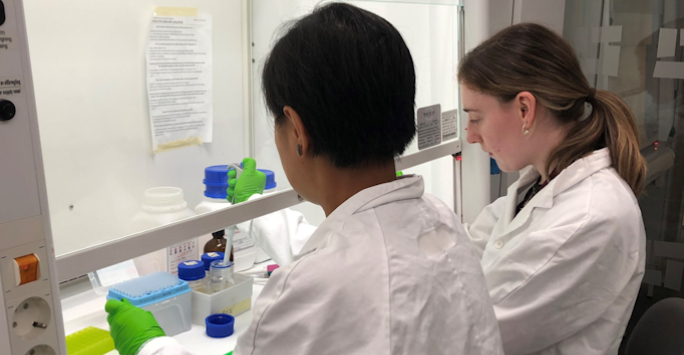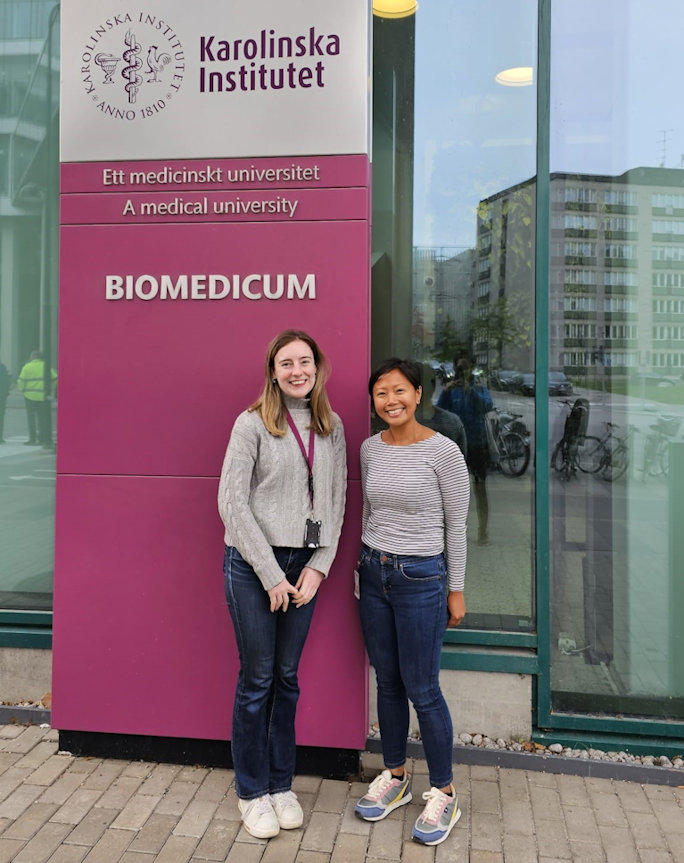
Georgina Gregory is a Research Associate in the Copple Lab within the Department of Pharmacology and Therapeutics. She recently spent three weeks in Sweden at the Karolinska Institutet and tells us about her trip.
I recently had the exciting opportunity to spend three weeks at the Karolinska Institutet in Stockholm, Sweden, to learn how to develop a complex human 3D model for non-alcoholic steatohepatitis (NASH). NASH is a liver disease that is an ever-growing problem, especially in western countries, and there are currently no treatments available for it. Joining me on the trip was Dr Rowena Sison-Young, the Facility Manager for the Human Liver Research Facility (HLRF).
Learning new techniques
We worked in Professor Magnus Ingelman-Sundberg’s lab alongside his team, who are world-leading experts in developing human liver spheroids that are able to capture the complexity of NASH, and learn how to do this ourselves, in order to bring back the techniques to Liverpool and implement them in our own lab, and more broadly within the HLRF. We also visited Dr Ewa Ellis at Huddinge Hospital, who is an expert in human liver cells isolation. During our short visit, we gained valuable insights from her decades of experience in this specialised technique, which we aim to use to guide us in developing the capabilities within the HLRF further.
Although we were only in Stockholm for a short amount of time, we managed to learn a lot of new laboratory techniques. As well as learning how to develop the NASH spheroid model, we learned how to extract RNA from the spheroids, detect protein expression using immunohistochemistry and look at fat accumulation using fluorescent microscopy. This was an excellent opportunity for us to learn a lot of new skills and gain a fresh perspective and understanding of skills that we have started to develop here in Liverpool.
Outside the lab
During our time at the Karolinska Institutet, we had the chance to attend a few seminars, where other members of the research group shared their most recent findings. This was a great way to learn what other research was being carried out around the group. We also fully immersed ourselves in Swedish culture by taking part in fika every week with the lab group. Fika is a Swedish tradition where colleagues take a break together to enjoy coffee and cake, and the group did this on a regular basis. It provided a great opportunity to get to know our colleagues a bit better and to get away from the office and lab for a while. It is definitely something that we’d like to bring back to our own lab group here in Liverpool!
This training opportunity was a fantastic way for us to experience working in a different lab and environment, and to build on an existing collaboration between Professor Ian Copple’s research group in Liverpool, and Professor Magnus Ingelman-Sundberg’s group in Stockholm. We would like to thank the Ingelman-Sundberg research group in Stockholm for welcoming us so warmly and providing such an excellent training opportunity at their university.
The funding for this trip was provided by the Faculty’s Translational Research Visits scheme and Professor Copple’s MRC Senior Non-clinical Fellowship.
